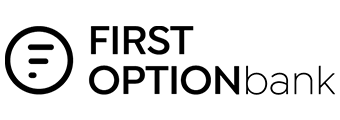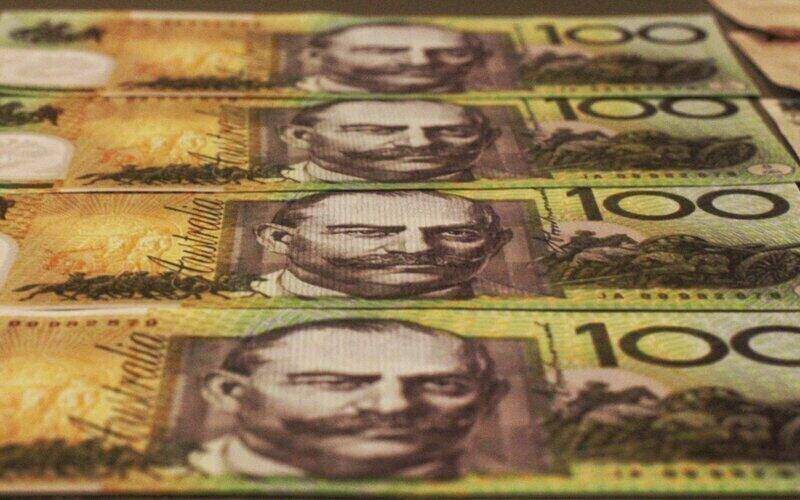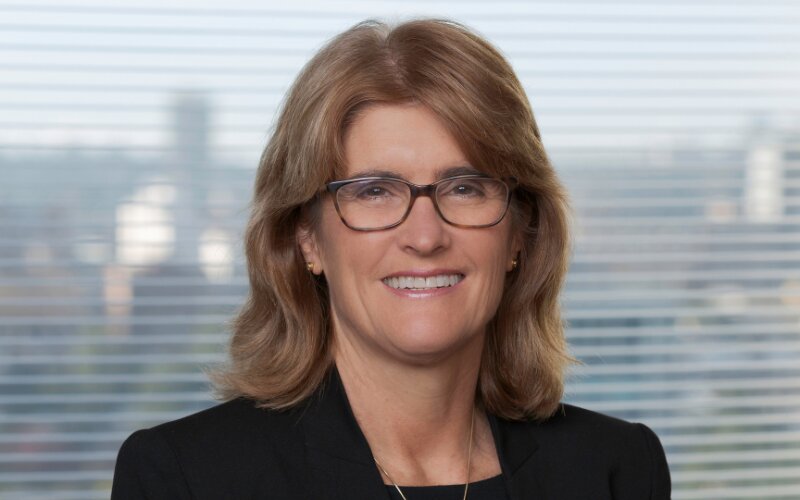During the pandemic, amidst historically low interest rates, RBA Governor Dr Philip Lowe ruled out taking the cash rate into negative territory, saying there was ‘no appetite’ for it in Australia.
If the past few years have taught us anything though, we can’t underestimate how quickly economic conditions and sentiment can change.
So if negative interest rates were tried in Australia, how would they work?
Buying a home or looking to refinance? The table below features home loans with some of the lowest interest rates on the market for owner occupiers.
What are negative interest rates and how do they work?
To properly understand what a negative cash rate means, it’s helpful to consider exactly what the cash rate is. The official cash rate is the targeted rate of interest on unsecured overnight loans banks borrow from the Reserve Bank and each other. When the cash rate goes up, it becomes more expensive for banks to borrow money - a cost which they typically pass on to customers. The cash rate basically acts as a benchmark for the price of consumer products like home loans and savings accounts.
This is why whenever the RBA makes any changes to the official cash rate, it’s big news. If the RBA lowers the cash rate, it usually means the interest rate on savings accounts go down, but also tends to mean the interest rate on home loans go down too, decreasing mortgage repayments.
In short: a low cash rate is usually bad news for savers but happy days for borrowers.
The RBA uses the cash rate as its primary tool for enacting monetary policy. If the RBA thinks inflation is too high, they can increase interest rates to bring down demand in the economy. This both increases the cost of borrowing, meaning businesses will spend less on investment and expansion, and decreases household spending, since households will need to spend more of their disposable income on mortgage repayments. This lowers the demand for goods in the economy, which (hopefully) brings down inflation. Conversely, if the economy is not producing enough, the RBA may lower the cash rate to try to stimulate spending.
A negative cash rate is an extreme measure meant to dramatically stimulate an economy, moving the cash rate below 0%. When the cash rate is negative, the central bank charges banks for the cash reserves they hold there. Banks are therefore heavily incentivised to lend out as much money as possible as they want to minimise their reserve funds. In theory, this means banks will dramatically reduce interest rates to get as many loans out as possible.
For example, lets imagine an economy where people have become incredibly frugal, saving nearly all of their disposable income. The central bank desperately need to stimulate the economy, so they set the cash rate at -0.5%. Banks are now charged 0.5% on all deposits with the central bank, and earn 0.5% on everything they borrow from other banks.
Lets say a bank in this scenario has $1 million. If they choose to store this with the central bank, they will be charged $5,000. If they loan out this money, even if they earn no interest from it, they are still better off. In theory, negative interest rates mean that banks would charge very little or no interest on borrowing. At the same time, since they are charged holding money with the central bank, they would significantly reduce or eliminate interest payments for savings accounts. As you can imagine, spending is likely to return in a big way.
The infographic below shows the history of our cash rate, so you can see for yourself how it has evolved over time and during previous periods of economic crisis like the GFC.
Could we get negative interest rates in Australia?
From November 2020 to April 2022, when the cash rate in Australia sat at 0.1%, negative rates didn’t look completely unfathomable.
But as we’ve discussed, Reserve Bank governor Philip Lowe has steadfastly maintained that negative interest rates in Australia would be “extraordinarily unlikely”. In the minutes of the March 2020 monetary policy meeting, the Reserve Bank Board members were said to have “no appetite for negative interest rates in Australia”.
Prior to this, in a November 2019 speech Lowe said negative interest rates have “largely been a European phenomenon”.
He also said negative interest rates could do more harm to the economy than good.
“There is evidence that they can encourage households to save more and spend less, especially when people are concerned about the possibility of lower income in retirement,” Lowe said.
“A move to negative interest rates can also damage confidence in the general economic outlook and make people more cautious.”
But more recently, the RBA has seemingly softened its stance towards negative interest rates. In September 2020, then-RBA deputy governor Guy Debelle said that while the effects of negative interest rates were mixed, he didn’t completely rule them out either.
“In the short-term, they [negative rates] can contribute to a lower exchange rate," Debelle said.
"In the medium term, the effectiveness can wane including through the effect on the financial system.
"Negative rates can also encourage more saving as households look to preserve the value of their saving, particularly in an environment where they are already inclined to save rather than spend."
Since then of course, the economy has shifted gears, and rate hikes are all the rage at the moment. If we stay in 2020 for a moment though, it’s important to remember that the market saw the cash rate dropping to 0% or below 0 as a genuine possibility. As you can see from the ASX RBA rate indicator for September 2020 below, market expectations of a 0% cash rate were quite high.
| Trading Day | No change | Decrease to 0.00% |
| 22nd September | 31% | 69% |
| 23rd September | 23% | 77% |
| 24th September | 23% | 77% |
| 25th September | 28% | 72% |
| 28th September | 36% | 64% |
| 29th September | 36% | 64% |
| 30th September | 36% | 67% |
| 1st October | 36% | 64% |
Source: ASX RBA rate indicator
Theoretically, lowering the official cash rate should kickstart an economy. But PRD chief economist Dr Diaswati Mardiasmo says doing so can also backfire.
“History suggests that this (lowering the cash rate) is a very temporary relief and quite a risky move, as past learnings have shown weaker currencies, savers taking their money out of the bank (to avoid fees), borrowers taking out loans that are beyond their normal serviceability, and stock markets underperform,” Dr Mardiasmo told Savings.com.au in 2020.
“One of the things we have to be extremely careful of, is that if we do go into close to zero or even negative interest rates, is that it is unchartered territory for the Australian economy and its people.”
Why would the Reserve Bank lower the cash rate to 0 or below?
There are a couple of reasons that might prompt the reserve bank to implement a very low cash rate.
1. To boost economic activity and inflation
One of the biggest reasons the Reserve Bank lowers the official cash rate is to give a sluggish economy a boost and push inflation upwards.
Although inflation may sound like a dirty word, it’s actually just as important for the RBA to boost inflation when it’s too low as it is to curb it when it’s too high. If inflation is very low, supply in an economy is too big relative to demand. Low demand means businesses will produce less, which can lead to unemployment, further diminishing demand. A healthy economy should be constantly expanding slowly, which means demand ideally always sits a bit ahead of supply (hence the inflation target). This increases the likelihood of new businesses entering the market or existing businesses expanding to meet excess demand, which drives economic growth.
In 2020, Grattan Institute senior associate Matthew Cowgill said the RBA could take the official cash rate into negative territory in order to achieve its inflation target.
“The Reserve Bank is tasked with achieving inflation of 2 to 3%, on average, as well as full employment. Inflation was persistently below this target before COVID, and has fallen further since the pandemic struck,” Mr Cowgill told Savings.com.au at the time.
“In normal times, faced with an inflation situation like that, the Bank would cut interest rates. Now that the cash rate is near zero, it needs to consider alternative measures to boost economic activity and inflation. Negative rates are one of the tools it could use.”
2. To encourage people to spend more money
Mr Cowgill said lowering the cash rate typically encourages spending through increasing the wealth and cash flow of households, which can drive inflation.
“Cutting interest rates encourages borrowing, consumption, and investing, while discouraging saving. This helps in a situation where aggregate demand — the amount of spending in the economy — isn’t sufficient.”
This is often referred to as the ‘cash flow channel of monetary policy’.
Data from the pandemic era though revealed Australians continuted to save, not spend despite rate cuts.
APRA data shows a 6.4%, or $6.4 billion increase in household deposits (savings accounts, term deposits) from March to June 2020 - indicating Aussies were hoarding cash. Over the same period, the household savings rate increased from 6% in the March quarter to 19.8% in the June quarter, the biggest single increase ever recorded.
So instead of encouraging people to spend more, cutting cash rates further could actually do the opposite. Dr Mardiasmo said lowering the cash rate any further could spook people into hoarding their cash.
“Going into negative interest rates is something we have not done before and it can cause more uncertainty and people being unsettled, as opposed to building people’s confidence,” she told Savings.com.au.
“We all understand that expansionary monetary policy – aka RBA cutting rates – is a move to assist a declining or unhealthy economy. So cutting further can assist, but it can also make people uneasy and uncertain of our economic health.
“This can have major repercussions on business, investment market, the way people spend, property market, etc. We can literally go either way.”
What do negative interest rates mean for home loans and savings accounts?
In theory, negative interest rates would mean that savers would effectively be paying to store their money in the bank while borrowers would be earning interest on their home loan.
A real life example of this is Jyske Bank in Denmark, who made history for launching the world’s first negative home loan interest rate. Under the 10-year fixed-rate mortgage at -0.5% borrowers make their usual monthly repayments but the outstanding amount reduces every month by more than your repayment.
“We don’t give you money directly in your hand, but every month your debt is reduced by more than the amount you pay,” said Jyske’s housing economist Mikkel Høegh.
Sounds like a pretty sweet deal right? However, Dr Mardiasmo said it’s unlikely that even if the official cash rate in Australia were taken into negative territory that lenders would necessarily follow suit.
“A key aspect to remember is that Australian banks/lenders are not legally bound to follow the RBA’s cash rate movements,” Dr Mardiasmo said.
“In the past there have been instances where banks passed on the cash rate cuts in its entirety, others when they only passed on half of the cash rate cut, others when they remained as per their current rates.
Mardiasmo added the likelihood of lenders taking consumer products like home loans and savings accounts into negative territory depend on how a bank is funded.
“If a bank finances itself with a lot of deposits then it would be at a competitive disadvantage, and may not pass on the RBA’s rate cuts.”
While that’s slightly unfortunate for those of us with a home loan, it should come as a big relief to savers. The same Denmark bank has also launched a -0.6% interest rate on its savings account (only for millionaire customers). This effectively means that savers are paying to store their money in the bank so instead of earning interest on their money, the balance in their account falls every year.
If this were to happen in Australia, you would imagine people would immediately take everything out of the bank and start keeping money under their mattress.
But Mr Cowgill assures us this is very unlikely to happen.
“If the RBA were to send the cash rate a little into negative territory, savers and borrowers would still face interest rates above zero, they’d just be a little below current levels,” he said.
When negative interest rates have been applied in practice in other countries, most banks have been reluctant to pass them directly on to their customers. Earning interest on loans is how banks make money after all, so they would typically try to charge at least a small positive interest rate. If banks actually began charging people to keep their savings with them, people would take their money out, depriving the bank of the deposits they rely on. In Japan for example, where interest rates have been negative since 2016, savings accounts often pay rates like 0.001% p.a, to maintain even a miniscule incentive for customers to make deposits.
Need somewhere to store cash and earn interest? The table below features savings accounts with some of the highest non-introductory and introductory interest rates on the market.
Savings.com.au’s two cents
It seems fairly unlikely that the RBA would ever take the cash rate into negative territory. If it does though, it also seems equally unlikely that lenders would take interest rates on consumer products like savings accounts and home loans into negative territory. If there’s ever a minus sign in front of the number the RBA releases, it isn’t time to take all your money out of the bank and bury it in the garden.
This article was originally posted by Emma Duffy in 2020, and updated by Harry O'Sullivan in March 2023
First published on October 2020











 Brooke Cooper
Brooke Cooper
 Harrison Astbury
Harrison Astbury

